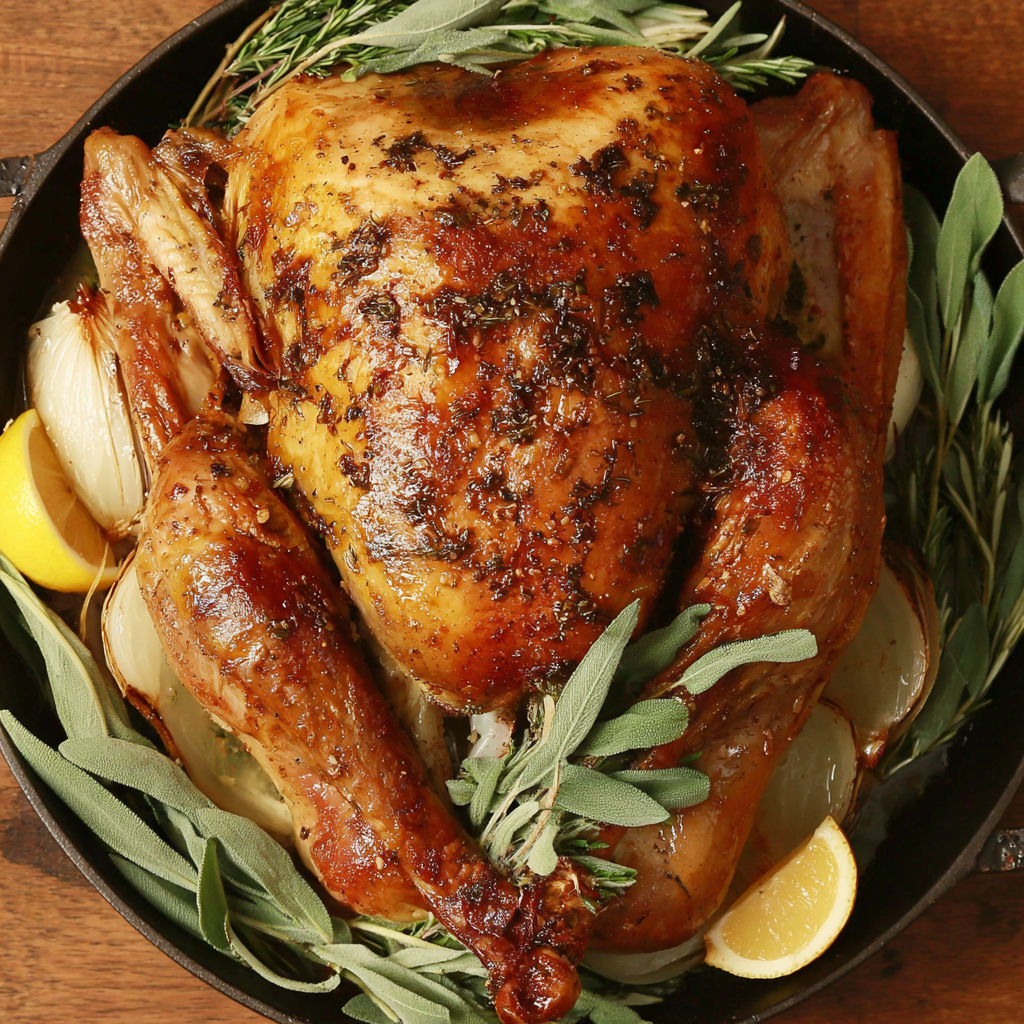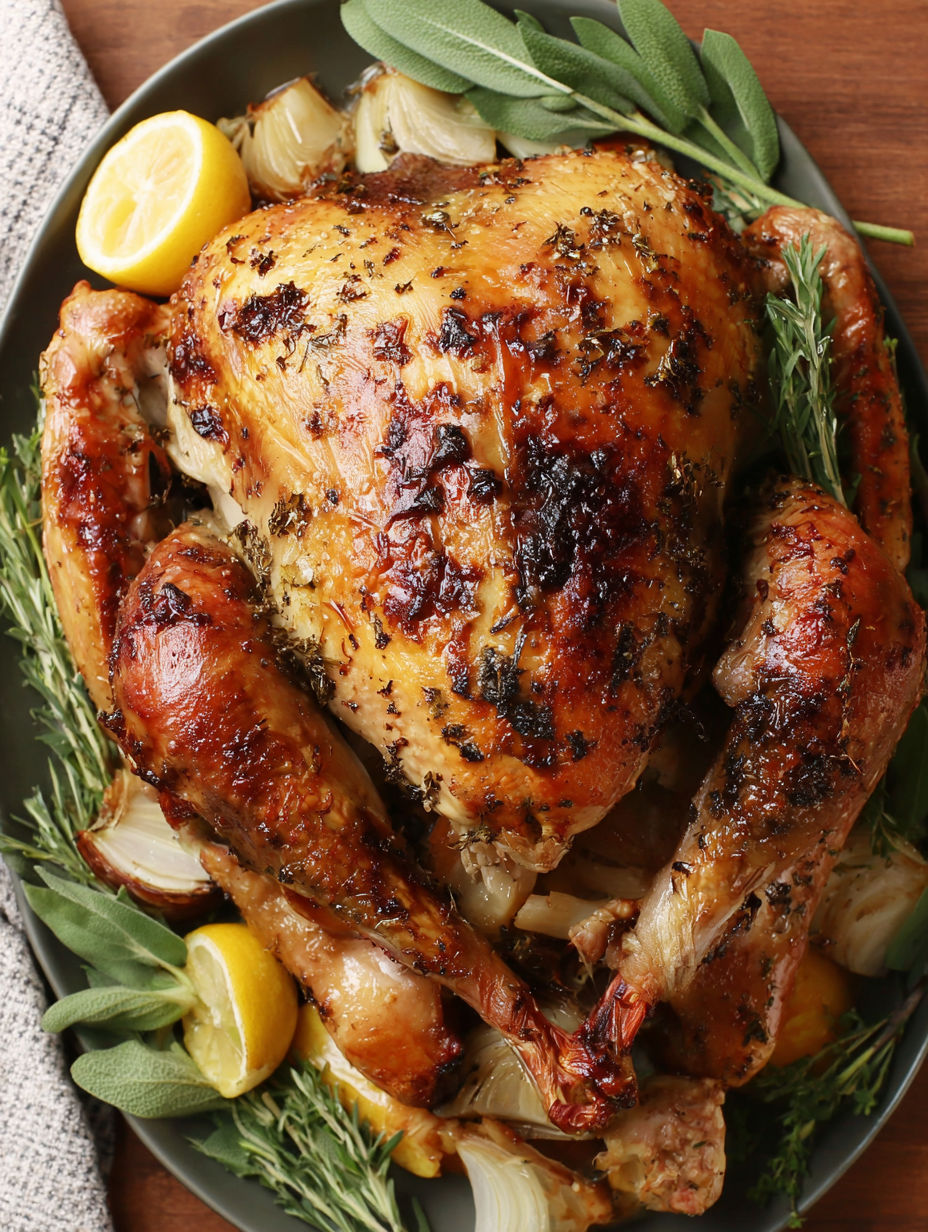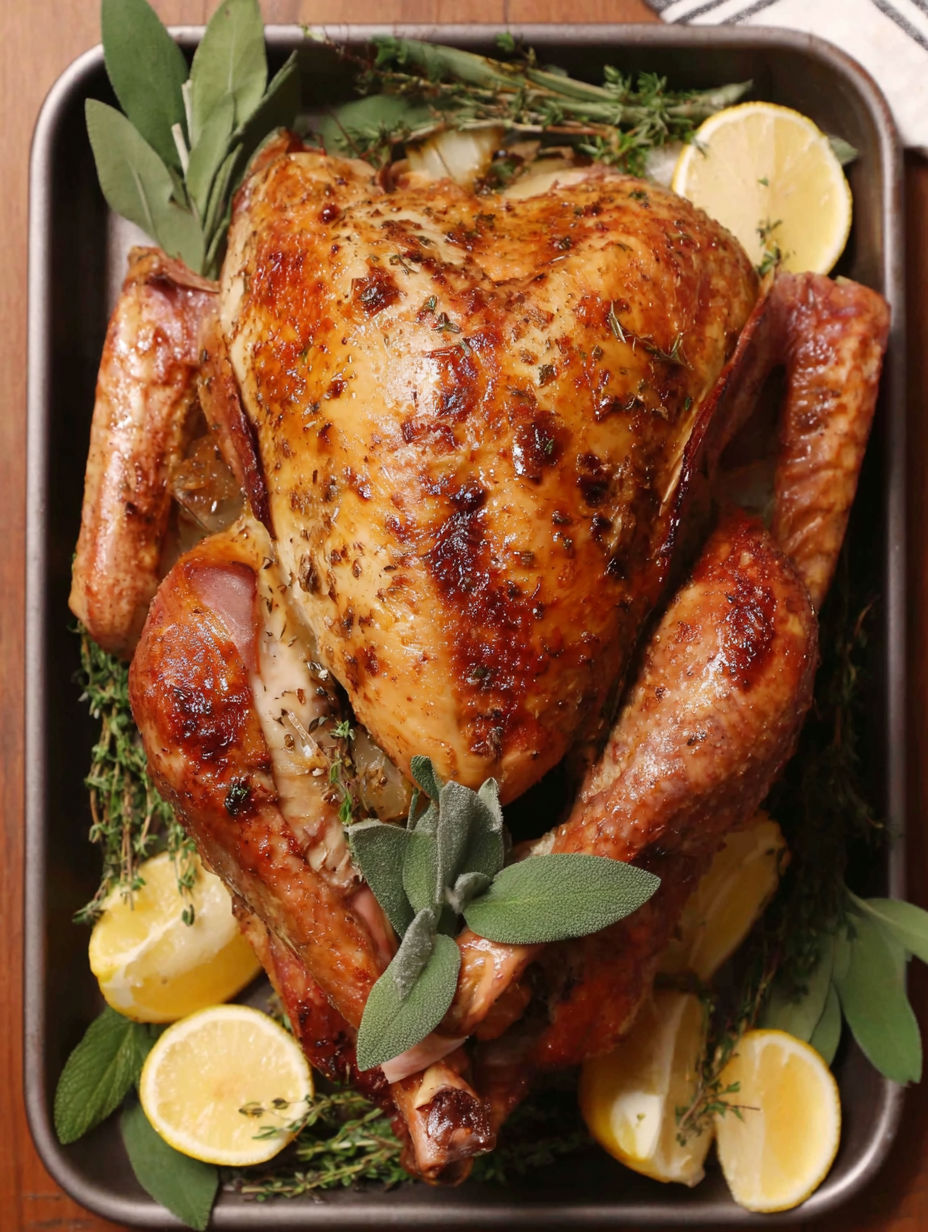 Bookmark
Bookmark
Roasting a Thanksgiving turkey that turns out moist and flavorful does not have to be complicated. This recipe guides you through every step from defrosting to carving, ensuring a golden bird with crispy skin and tender meat that will impress your guests.
I remember the first time I tried this method the brining and herb butter made such a difference that my relatives kept asking for leftovers to take home. Now it is a tradition I look forward to every Thanksgiving.
Ingredients
- Turkey: fresh or frozen choosing the right size ensures even cooking, about one and a half pounds per person
- Kosher salt: helps to brine and bring out the meat’s natural flavor, use half a teaspoon per pound
- Unsalted butter: softened for easy mixing with herbs which helps keep the turkey moist
- Fresh sage leaves: add a fragrant earthy aroma, fresh is preferred but dried can work in a pinch
- Garlic: provides a robust backdrop to the herb flavors
- Dried thyme and rosemary: for classic Thanksgiving seasoning, look for whole dried leaves for better flavor
- Lemon wedges: add brightness and moisture inside the cavity
- White onion: with skin on to add sweetness and flavor during roasting
- Carrot and celery: contribute to the roasting pan juices for an aromatic base
- Low sodium chicken broth: keeps the pan moist and will become the base for gravy
- All purpose flour: to thicken gravy as needed
Instructions
- Defrost the Turkey:
- Place the wrapped turkey on a baking sheet on the bottom shelf of your fridge and let it defrost slowly, fresh turkeys take about one day per thaw while frozen ones need four to five days. For a rush, submerge the turkey in cold water for 30 minutes per pound changing the water as it warms.
- Brine the Turkey:
- Remove packaging carefully without tearing the skin. Discard any innards and giblets from the cavity. Pat the turkey completely dry with paper towels to ensure crisp skin. Sprinkle kosher salt all over the turkey including inside the cavity and under the skin. Leave the turkey uncovered in the fridge for one full day. For longer brining cover loosely and remove cover for the last day to dry the skin.
- Prepare Herb Butter and Season the Bird:
- Chop fresh sage leaves finely and mash together with softened butter, garlic, dried thyme, and rosemary. Trim wing tips and remove the wishbone by carefully cutting around and pulling it out. Loosen skin over the breasts without tearing it and rub the herb butter underneath and all over the turkey including inside crevices and the cavity. Place lemon wedges and some onion inside the cavity.
- Set Up the Roasting Pan:
- Place remaining onion wedges, chopped carrot, and celery in the roasting pan. Pour in the chicken broth and add the trimmed turkey parts like wing tips and wishbone. Put a wire rack on top and position the turkey on it breastside up.
- Roast the Turkey:
- Preheat your oven to 325 degrees Fahrenheit (160 Celsius). Put the roasting pan on the lowest rack and the turkey on the wire rack on the middle rack positioned above the pan. Roast for about two hours or until the internal temperature reads 160 degrees Fahrenheit (71 Celsius). Begin checking around 90 minutes to avoid overcooking.
- Rest and Make Gravy:
- Remove the turkey from the oven and let it rest on a wire rack set over a baking sheet for 30 minutes. The temperature will rise to 165 Fahrenheit (74 Celsius). Strain solids from the pan juices into a pot and boil to reduce. For thicker gravy mix flour with broth and whisk while adding back to the pot. Cook until thickened and keep warm.
- Carve the Turkey:
- Start with releasing the legs by cutting where they meet the breasts carefully. Pull legs away from the carcass and tuck under the wings. Use a sharp knife to cut the breasts off by following the breastbone. Separate wings by cutting through joints. Cut drumsticks from thighs and slice breasts across the grain. Arrange meat on a platter and garnish with sage leaves and lemon wedges. Serve warm with gravy.

I love fresh sage for this dish because the aroma is so comforting and brings the entire meal together. One year we had an unexpected family gathering and it was this turkey that made the meal feel special and homey right away.
Storage tips
Leftover turkey will keep in the fridge for three to four days in airtight containers. For longer storage, slice and freeze in meal sized portions wrapped tightly to avoid freezer burn. Use frozen turkey in soups, sandwiches, or casseroles.
Ingredient substitutions
Fresh herbs can be swapped for dried if needed but reduce quantities as dried herbs are more concentrated. Butter may be replaced with olive oil for a lighter version though the flavor will differ. Chicken broth can be replaced with vegetable stock for a different twist.
Serving suggestions
Serve with classic sides like mashed potatoes, green beans, cranberry sauce, and stuffing. The gravy made from pan drippings complements these perfectly and enhances the turkey flavor.

This roast produces a moist flavorful turkey with crisp skin that will please family and friends. Rest the meat and serve with the pan gravy for best results.
Common Questions About Recipes
- → How long does it take to roast a turkey?
Roasting takes about 2 hours for a medium-sized bird, but cooking time varies based on size. Aim for an internal temperature of 165˚F (74˚C).
- → Why is brining important?
Brining helps retain moisture by seasoning the turkey inside and out, resulting in juicy, tender meat after roasting.
- → Can I use fresh herbs instead of dried?
Yes, fresh herbs like sage, thyme, and rosemary can be used to create a vibrant herb butter that enhances flavor and aroma.
- → What vegetables work best for roasting with turkey?
Onions, carrots, and celery add savory depth and aroma when placed in the roasting pan beneath the bird.
- → How do I make the gravy from pan drippings?
Strain the pan drippings, simmer to reduce, then thicken with flour mixed in stock for a smooth, rich gravy.
